Nov 20, 2023
Route Live Website Prospects to The Perfect Sales Reps (Ultimate Guide)
Here's a deep dive into using ServiceBell to route website prospects to the perfect sales reps.
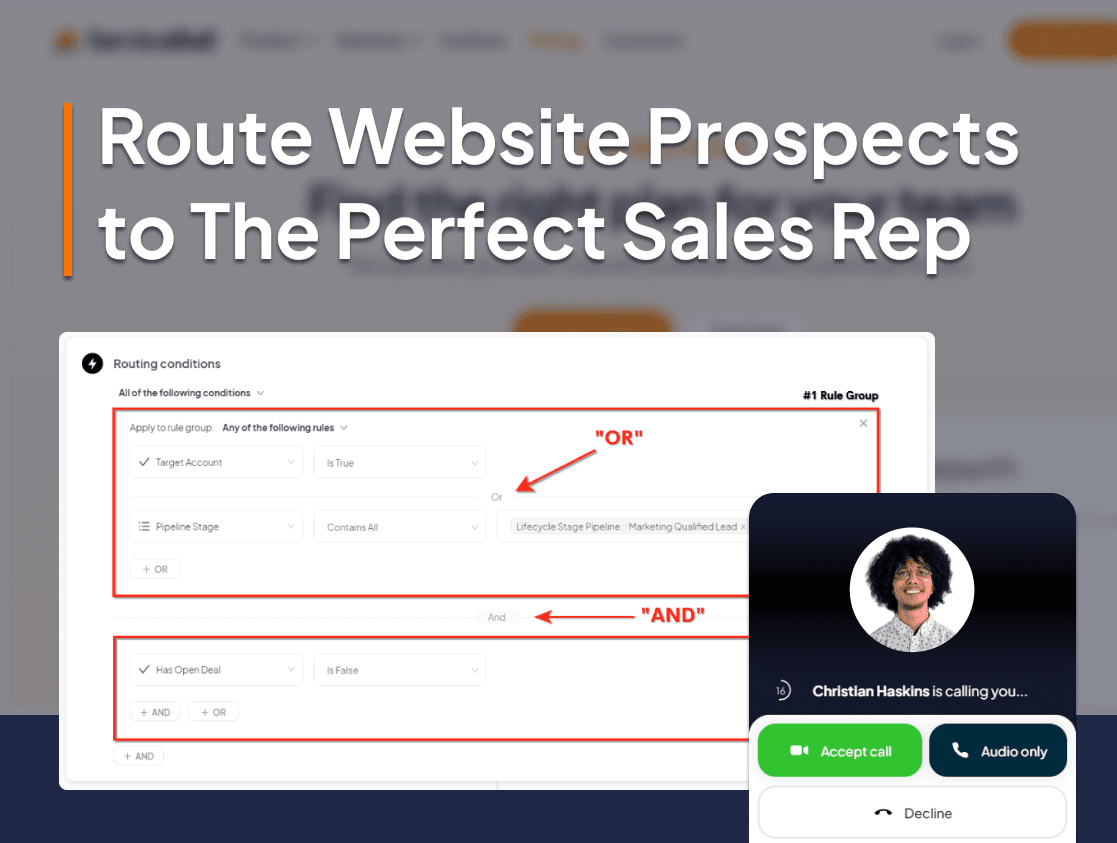
Nothing will make your sales reps happier than being spoon-fed warm prospects, automatically.

This play gives you everything you need to know to efficiently route website prospects to the perfect sales reps. So you can spoil your reps and convert more website prospects.
TL;DR
The Basics of Routing
Popular Routing Rules & Use Cases
Combing Routing Rule Groups
Route Prospects to HubSpot Record Owners
Configure Default Routing
The Basics of Routing
Routing lets you control exactly how certain visitors, prospects, and accounts get connected to specific reps and agent groups. It basically lets you find and connect the perfect rep to visitors, based on their CRM data, behavior, and demographics.
You can find the “Routing rules” by clicking “Automations” on the left sidebar:
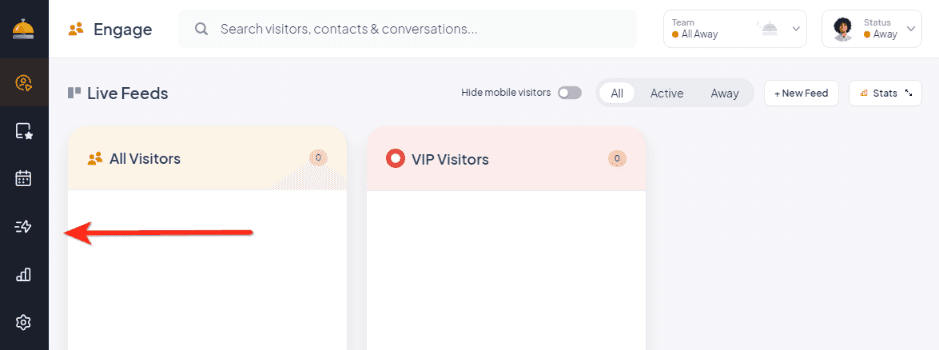
“First Available” vs “Round Robin” routing

First Available → Fastest agent to accept gets the lead.
✅ Speed: This method ensures the quickest response to alerts by routing them to the next available agent.
✅ Efficiency: It can maximize the utilization of available agents, reducing idle time.
❌ Potential Overload: Popular agents might become overloaded if they are frequently the first available.
❌ Uneven Distribution: Workload may become unevenly distributed among team members.
Round Robin → Conversations are assigned to active team members in a sequential order.
✅ Fairness: Ensures an equitable distribution of work across team members.
✅ Predictability: Agents can anticipate workload better, which can help with managing their time and reducing burnout.
❌ Potential Delay: May lead to slower response times since the next inquiry waits for the next agent in the sequence.
❌ Complexity: Can be more complex to manage if team members have different work schedules or if there's a high turnover rate.
Popular Routing Rules & Use Cases
Here’s the most popular and powerful ServiceBell routing rules and specific use-cases they’re best fitted for.
URL

The URL property lets you target visitors based on the page URL they’re viewing. Letting you include and exclude specific URLs (or even portions of the URL). This is especially powerful when combined with other routing rules and logic.
You can target page URLs like:
Home page
Pricing page
Contact page
Demo request page
etc…
You can target specific domains/sub-domains, like:
Your backend “app” domain
Your marketing website domain
Your proposal/quote page domain
etc…
Visitor Segments

Don’t create the same rules (for routing, live feeds, alerts, journeys, etc) over and over again. Visitor segments let you group visitors based on specific CRM data, behavior, and demographics. Plus, any changes made to a specific segment will update it across everything.
You can create visitor segments for:
Target accounts
High-intent visitors
Pricing page visitors
Ad campaign visitors
Prospects who ghosted
Prospects viewing proposals
Company visitors with open deals
Visitors who found you through LinkedIn
…and pretty much ANY criteria you want
UTM Parameters
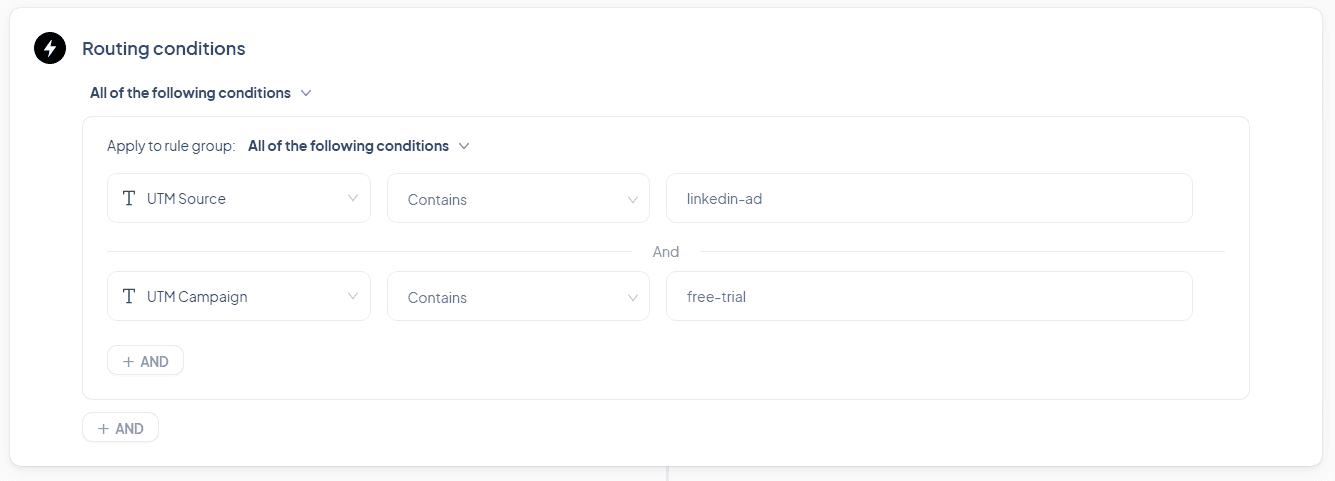
UTM parameters enable routing based on the traffic source, campaign, medium, and more. Letting you get highly-specific with how you route visitors from different contexts.
You can use UTM tags for:
Routing ad campaign visitors to specific SDRs
Routing cold-email prospects to the rep who sent the email
Routing prospects who clicked-through a reps’ LinkedIn to that specific rep
…and any use-case where you can include a UTM tag in the URL
Example URL: “https://servicebell.com/?utm_source=linkedin-ad&utm_campaign=free-trial”
Target Account

This one’s pretty self-explanatory. It lets you target, well, target accounts (pulled directly from your CRM). You can use this for:
Routing target account visitors to their respective reps
Routing target account visitors who previously visited but never converted (using the “Known Visitor” property)
etc…
Pipeline & Deal Stage
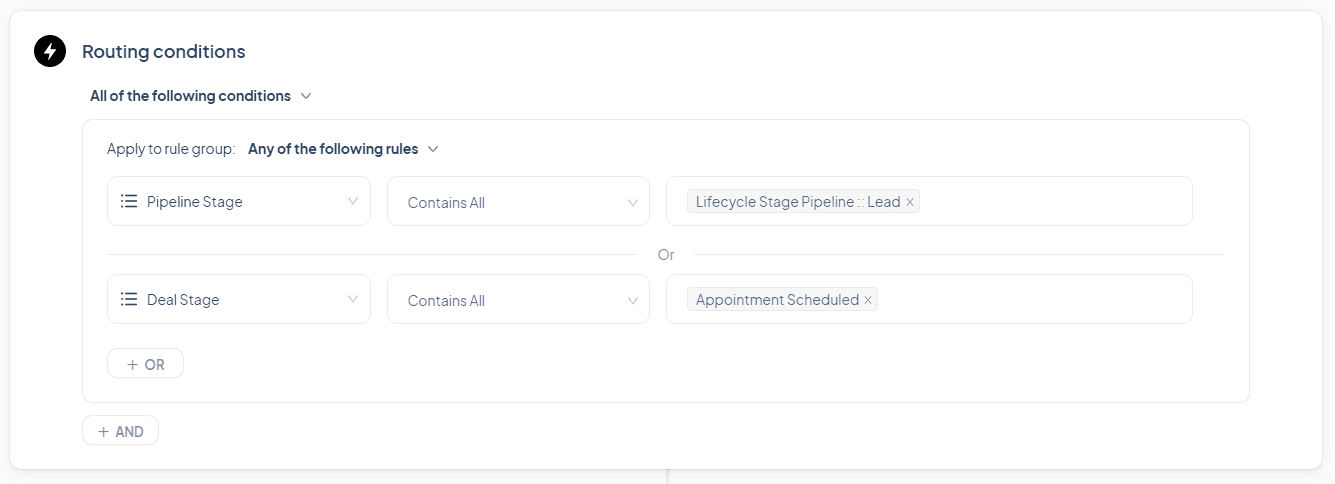
These three properties, “Pipeline Stage”, “Deal Stage”, and “Has Open Deal” — let you target visitors based on where they’re at in their buying journey. You can use this for:
Checking if a visitor has previously converted or not
Routing prospects with an open deal to the right AE
Excluding visitors with closed deals from certain routes
etc…
Known Visitor

The Known Visitor rule is designed to recognize return visitors based on their previous interactions with your site. You can use this for:
Routing target accounts who visited but didn’t convert
Routing based on whether it’s their first time visiting the site
etc…
Agent Availability
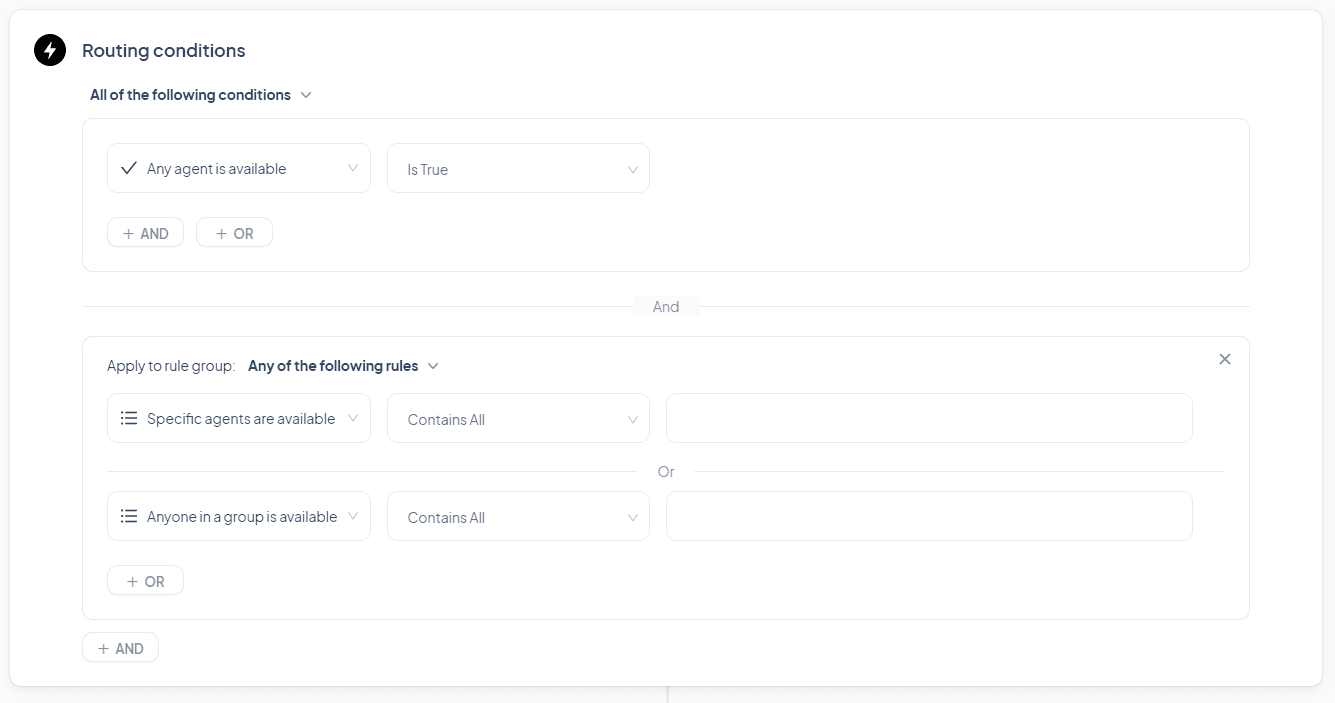
This one’s another self-explanatory one. It lets you control routing logic based on what agents are available, if any. You can use this for:
Prioritizing certain agent groups over others
Routing to backup agents when primary agents are unavailable
Controlling routes based on available agent expertise
Combing Routing Rule Groups
Want to route visitors to reps with laser precision? Rule groups are your best friend.
Rule groups let you create sets of conditions that if true, will route visitors to specific reps.
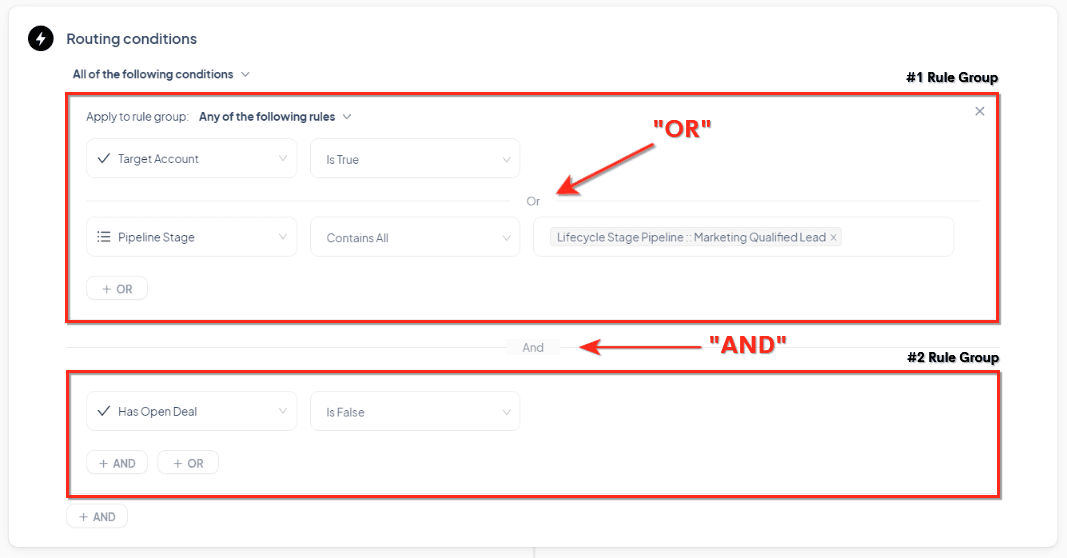
Individual rule groups can only use ONE logical operator “OR” / “AND”:
“OR” = if ANY of the conditions in the rule group are true
“AND” = if ALL of the conditions in the rule group are true

You can also combine rule groups using these same logic operators. Letting you be extremely precise with what conditions you route visitors to reps.
Route Prospects to HubSpot Record Owners
You can route visitors (who are tracked in your CRM) to the rep who owns that CRM contact:
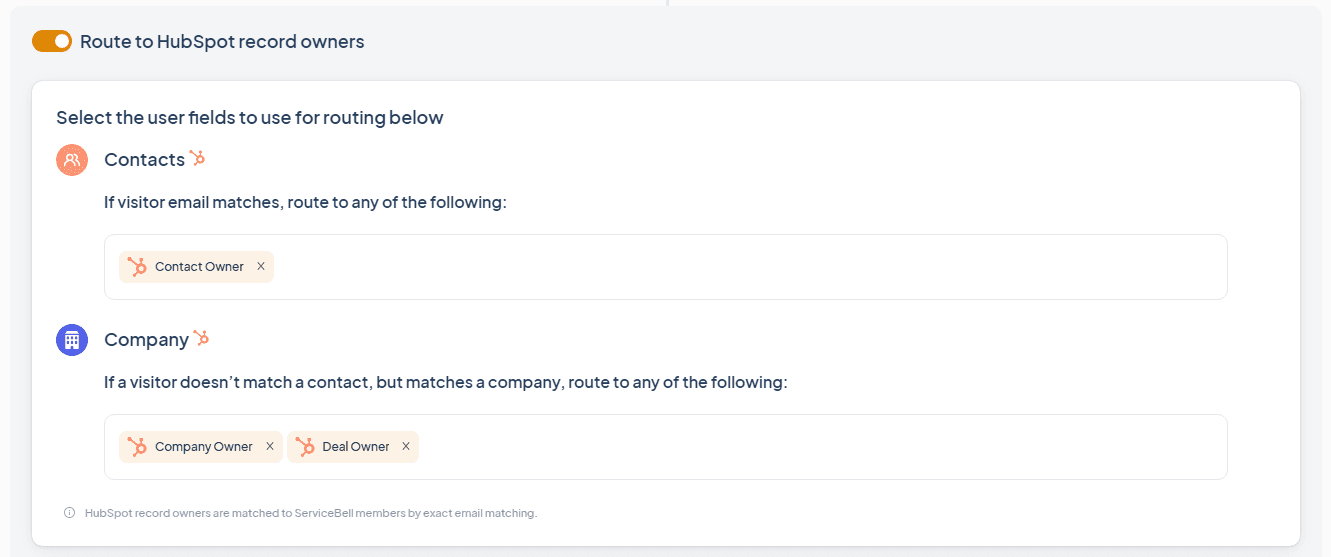
If a visitor doesn’t match a contact but instead a company/account in your CRM — you can route them to the company owner or deal owner in your CRM (as a fallback).
If more than one HubSpot users are found for routing, ALL of them will receive an alert, and the first available will be assigned to the visitor.
Configure Default Routing
If you find yourself repeating the same settings for multiple routing rules — you can just edit the default routing rule.
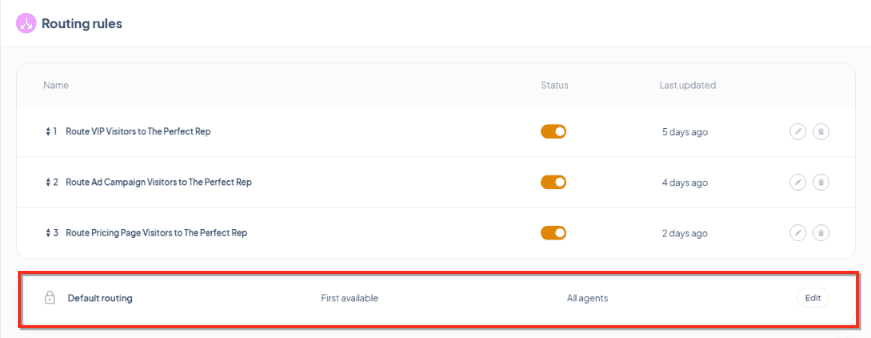
Letting you apply specific routing settings to all routing rules.

The default routing settings will be overwritten if you manually edit the routing settings for a specific routing rule.